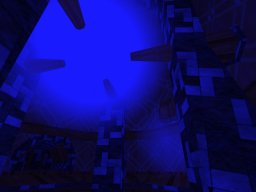More pages: 1 2
3
Volumetric lighting demo
Sunday, January 12, 2003 | Permalink
So I explore into Direct3D a little again. This time it's DX9 and the first demo utilizing it is here.

It's a demo of volumetric lighting through a 2.0 vertex shader.
Enjoy!

Me
Thursday, January 16, 2003
Damn, no chance of us seeing a similar effect not using fragment programs in the future?
Hmmmmm next time I update my graphics card the GeForceFX will probably be about a year old heh.
NeoKenobi
Sunday, January 19, 2003
Why do you guys actually wait for a GeForce FX? ATI has already shown it's superiority over Nvidia with the Radeon 9700...
Xen
Monday, January 20, 2003
The Vertex Shader 2.0 can run on every system with dx9 in software, but this isn�t slow. (even 3.0 Vertex Shaders can be used)
Humus
Tuesday, January 21, 2003
I suppose you meant to way it IS too slow to use the software path rather than that it isn't. I get about 7fps with software vertex processing, compared to 100+ fps with hardware vertex processing.
Loed
Saturday, January 25, 2003
Is it technically possible on the 9700pro to implement the same solution as this, but say with perlin noise, for alpha.. or similar
..and did I say, I love the effect by the doorways.
sweet!

Humus
Sunday, January 26, 2003
I don't quite get what kind of effect you're looking for.
Loed
Monday, January 27, 2003
well then.. I'll try to explane it better..
In this demo you have a spherical volumetric. fog/light in the centre of the scene. Is it possible to add a more complex function and still not suffer a big preformance hit? The type of function I was thinking of was something like a "fluffy cloud" using Perlin noise (or similar) to further manipulate the density/opacity of the vol.Light/fog .....hmm did'nt manage to speak anything but giberish this time either..

well icq me if you still have'nt got a qlue as to what I'm asking about

Humus
Monday, January 27, 2003
I suppose you could fake it by just adding some perlin noise function to the depth, but it's hard to do it the real way. You could of course though create some kind of cloud by using many small spheres though, but it would cause a heavy performance hit though.
More pages: 1 2
3



